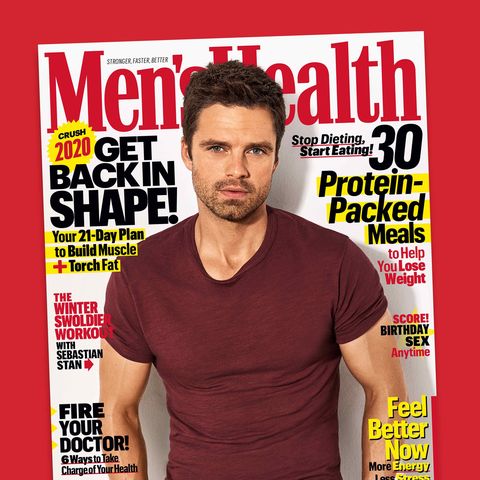Flex a quad if your leg day consists of a squat-o-platter (back squats, front squats, squats cleans, etc). Looking back at your beautiful bulked badonk and thinking, “that’s me”? Well, trainer Jay T. Maryniak has got some bad news for you: “[you] aren’t working on [your] posterior chain enough.”
Made up of our hammies, erector spinae muscles, calves, lates, and rotator cuff muscles, the posterior chain is the powerhouse of the body that’s as Maryniak says, “really important for aesthetics, but even more so for overall functionality and performance.”
Posterior training is important for staying in the game. He explains: “Having the balance and strength in [your] hams/glutes will also reduce the risk of injury,” he says. “Anytime we are weak and under active in certain areas, other areas/muscles start taking over for those weaknesses.” So if you’re only doing squats on leg day, for example, your hammies aren’t being optimally developed, which can cause your hip flexors, lower back, and knee stabilizing muscles to compensate. Long term, this can lead to overuse injuries.
Convinced to “get in on it”? Below, a posterior chain workout Maryniak recently posted on Instagram:
https://www.instagram.com/p/B5vkn5_F03V/
A post shared by Jay T. Maryniak (@jtm_fit)
Movement 1: The Sumo Deadlift
For this first move stand with your feet wider than shoulder-width, a loaded barbell against your legs. Keeping your back flat, hinge at your hips to grab the barbell with an overhand grip.
Focus on pulling together your lats as you stand the weight up. Check out this guide on the sumo deadlift more helpful tips.
Movement 2: Kettlebell Swings

Set the weight between your feet, which should be hips-width apart. Lock and load your core, then hinge at your hips (a common theme in this workout routine) to grab the bell with both hands.
Drive through heels and explode through hips to send bell swinging to chest-height. As the bell begins to descend, let the weight move between your legs as you move into a second rep. Check out this guide for any other form cues you might need.
Movement 3: Single Leg Romanian Deadlift
For the single leg romanian deadlift, go ahead and set up a dip bar as Maryniak does, if you have one. Otherwise, a rig or even wall will do. With a kettlebell that’s less than half the weight you’d usually kettlebell deadlift in your right hand, and the left on your stabilizing device, adjust your feet to shoulder width.
Now, brace your core and simultaneously kick your left leg back while hinging forward. Bend your right knee slightly as you lower the weight to the floor. As soon as the weight hits the floor, explode back to standing, squeezing your glutes at the top.
The goal for this movement is to keep your hips in a neutral position—which holding onto something with your non-weighted hand, and bracing your core, can help with.
Barbell Walking Lunge
Set up a barbell in a rack as you would for a back squat—but load it to, or less than, something you could bulgarian split squat. Enter rack backward, so that when you unrack the weight you can freely walk forward. With your feet shoulder-width apart and barbell across your shoulder blades, pull down on the bar to engage your lats and brace core.
Take a step forward with one leg, keeping a proud chest as you drop into a lunge. Pushing your weight into your front foot, step up with your back back leg and into immediately into a second lunge step.
Your number one priority here is to maintain a tall chest from start to finish. If your upper back begins to round or core begins to give, rerack the bar and drop weight.
Note: If you don’t have the space to do a walking lunge, doing them in place instead.
Horizontal Hamstring Curls
This movement takes a decent bit of set-up, but it’s worth it for the hamstring demolition. Lower a set of gymnastics rings so that they’re two to three feet in the air. Now place a plyo box a few feet away so that when you hang from the rings as Maryniak does in the video, your heels can rest on the box.
Brace your core so that your body makes a a straight line from your heels to your head. Press into your heels into the box, and engage hamstrings to pull your body forward until your knees are at a 90 degree angle. Control your body as you unbend your legs and return to start, so that the ring strings aren’t swinging you into position.
Source: Read Full Article
